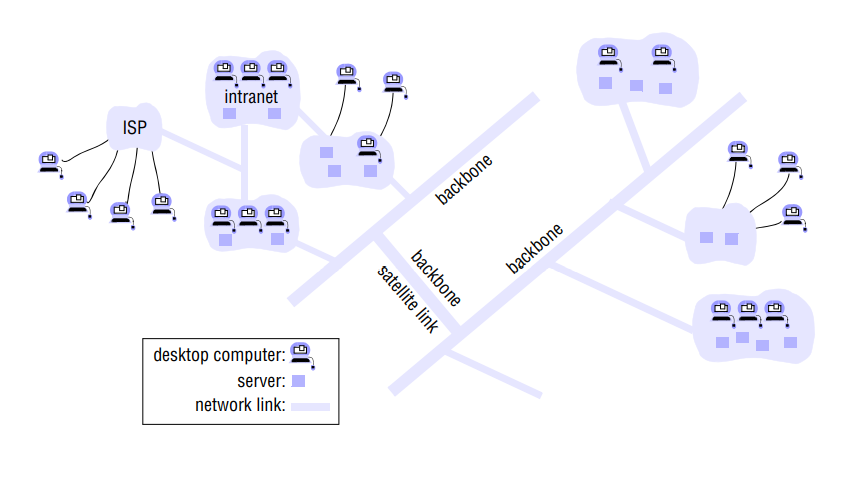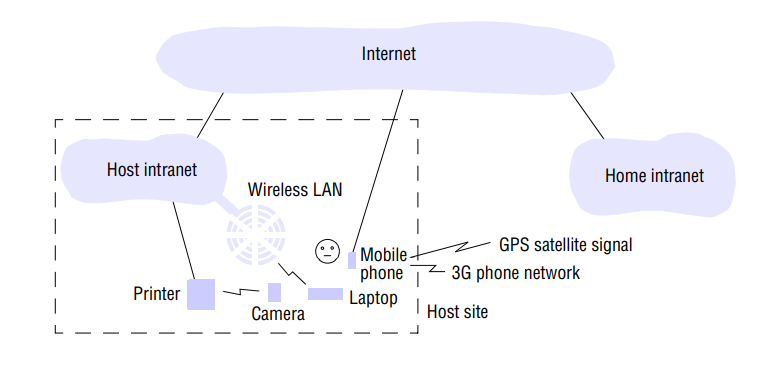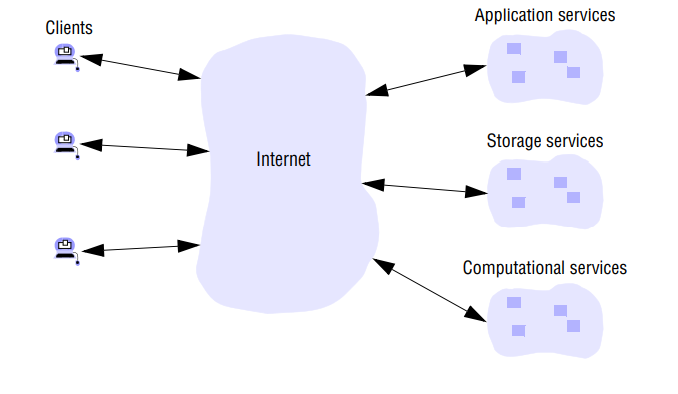Distributed systems are undergoing a period of significant change and this can be traced back to a number of influential trends:
- the emergence of pervasive networking technology;
- the emergence of ubiquitous computing coupled with the desire to support user mobility in distributed systems;
- the increasing demand for multimedia services;
- the view of distributed systems as a utility.
Pervasive networking and the modern Internet
The Internet is also a very large distributed system. It enables users, wherever they are, to make use of services such as the World Wide Web, email and file transfer. (Indeed, the Web is sometimes incorrectly equated with the Internet.) The set of services is open-ended – it can be extended by the addition of server computers and new types of service. The figure shows a collection of intranets – subnetworks operated by companies and other organizations and typically protected by firewalls. The role of a firewall is to protect an intranet by preventing unauthorized messages from leaving or entering

Mobile and ubiquitous computing
Technological advances in device miniaturization and wireless networking have led increasingly to the integration of small and portable computing devices into distributed systems. These devices include:
- Laptop computers.
- Handheld devices, including mobile phones, smart phones, GPS-enabled devices, pagers, personal digital assistants (PDAs), video cameras and digital cameras.
- Wearable devices, such as smart watches with functionality similar to a PDA
- Devices embedded in appliances such as washing machines, hi-fi systems, cars and refrigerators

Distributed multimedia systems
With the increasing maturity of distributed systems infrastructure, a number of companies are promoting the view of distributed resources as a commodity or utility, drawing the analogy between distributed resources and other utilities such as water or electricity. With this model, resources are provided by appropriate service suppliers and effectively rented rather than owned by the end user. This model applies to both physical resources and more logical services

